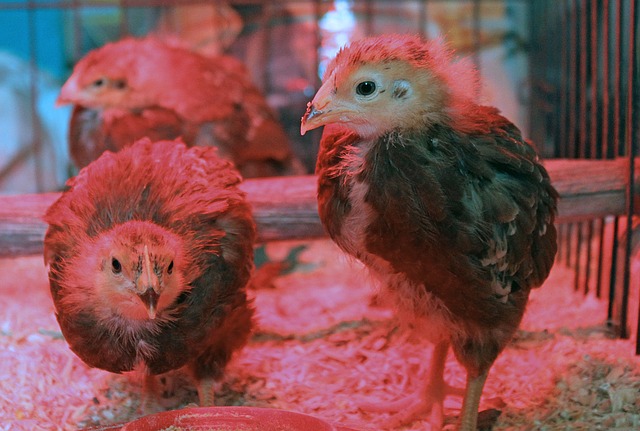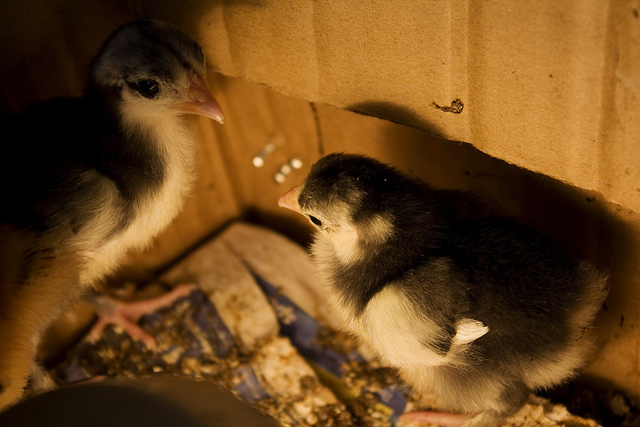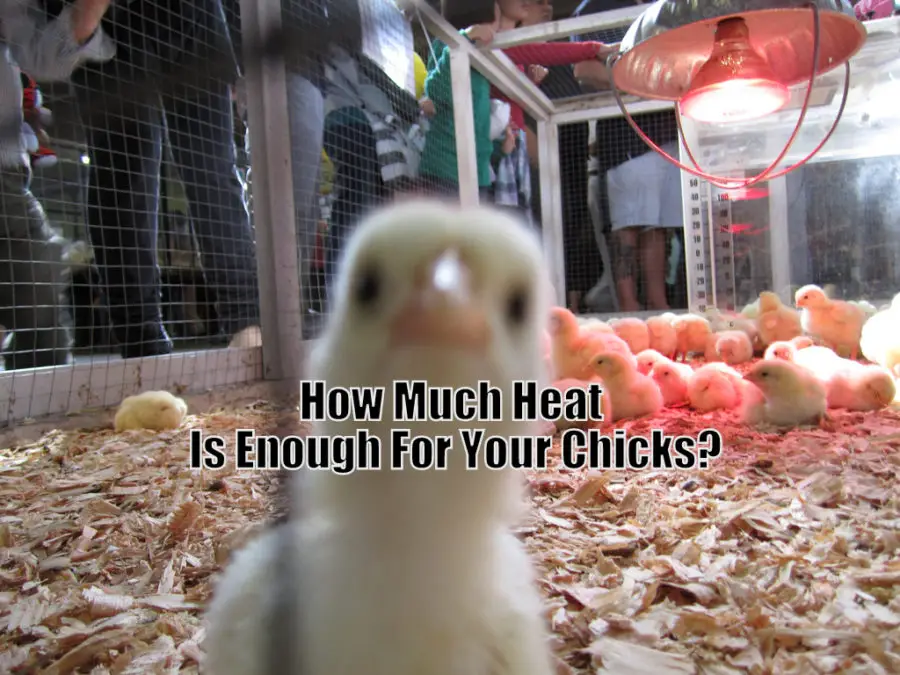It is essential for chicken keepers to maintain appropriate warmth for chicks, since excessive heat can have detrimental effects. Therefore, it is crucial to understand the optimal range of heat that is beneficial for chickens.
A common error observed among those who rear chickens is the improper placement of a heat lamp in close proximity to the chicks, which can lead to detrimental consequences such as heightened stress levels and, in certain cases, mortality.
The purpose of this post on typesofchicken.com is to provide assistance to readers in improving the health and well-being of their hens.
Heat Lamps: Yes or No?

As previously mentioned in the introduction, the utilization of heat lamps has the potential to induce excessive heat in chicks, leading to heightened stress levels and, in certain instances, mortality.
The disruption of the regular light regimen within the brooder might lead to confusion and difficulties in operation. The utilization of heat lamps in brooders carries the potential risk of fire, necessitating cautious handling by poultry keepers. The heat lamps that are frequently utilized possess a light bulb with a red hue and operate at a power rating of 250 watts.
Based on our investigation, it has been determined that these particular heat bulbs provide the highest level of risk.
Numerous individuals who raise chickens employ a heat lamp to provide warmth to their chicks during the brooding period. Typically, the heat lamp is initially set at a temperature range of 90-95 degrees Fahrenheit and gradually reduced as the chicks mature over the course of several weeks.
However, this practice may have adverse effects on the chicks’ adaptability to varying temperatures in their natural environment, potentially causing disruptions in their physiological systems.
By refraining from utilizing heat lights, one may ensure the safety of both oneself and the chicks.
What Would a Mother Hen Do?
The typical body temperature range of a hen is 104-107 degrees Fahrenheit. Prior to the hatching of her eggs, the hen possesses the ability to maintain their warmth.
Upon hatching, the chicks exhibit a deviation from the typical body temperature, necessitating the mother hen to undertake measures to acclimate them to the ambient temperature and surrounding surroundings. Initially, the brooding hen diligently maintains the thermal conditions for her offspring; but, after approximately one week, the chicks gradually exhibit more self-reliance.
In instances of cold temperatures, the chicks seek proximity to their mother in order to receive thermal comfort. In order to maintain the warmth of the chicks, the mother hen engages in a range of behaviors.
These activities encompass observing and overseeing their behavior, determining the order of importance in attending to individual chicks, and ensuring the safety of the chicks.
During her observation, she discerns the chick that exhibits a greater requirement for thermal comfort. The maternal hen employs a protective behavior by pulling her offspring beneath her own body, therefore ensuring their warmth.
How Would You Do What a Mother Hen Does?

To effectively rear a juvenile chicken, maintain a consistent temperature of 60 degrees Fahrenheit in the brooding environment. Understand the behavioral patterns of chicks in warm and cold conditions.
Chicks consistently exhibit heightened vocalization, marked by increased crawling sounds, indicating physiological or psychological states like thermoregulatory needs, distress, or fear. Closely observe their behavior, interpreting deviations as potential issues.
Assess ambient temperature in the enclosure using a thermometer or iterative adjustments until you see contentment signals from the chicks.
Using a heating system helps understand temperature-related issues. Proximity to the heat source signals cold temperatures, while distancing suggests the same. It’s straightforward.
Poultry caretakers must exercise patience to comprehensively understand their young chickens’ behavior and needs.
If conditions are right post-arrival but chicks continue to make disagreeable sounds, it doesn’t necessarily mean excessive warmth or coldness. They may be acclimating to their surroundings.
Attentively observe hens and discern their behavioral patterns to effectively nurture a thriving flock.


typo ” If getting away from hear source means they are cold”. NO IT MEANS THEY ARE HOT NOT COLD. PROOFREAD PLEASE.
The brooder should be 95 degrees for newly hatched chicks and the temperature should be lowered by 5 degrees each week. The chicks will huddle under heat source if they are cold.